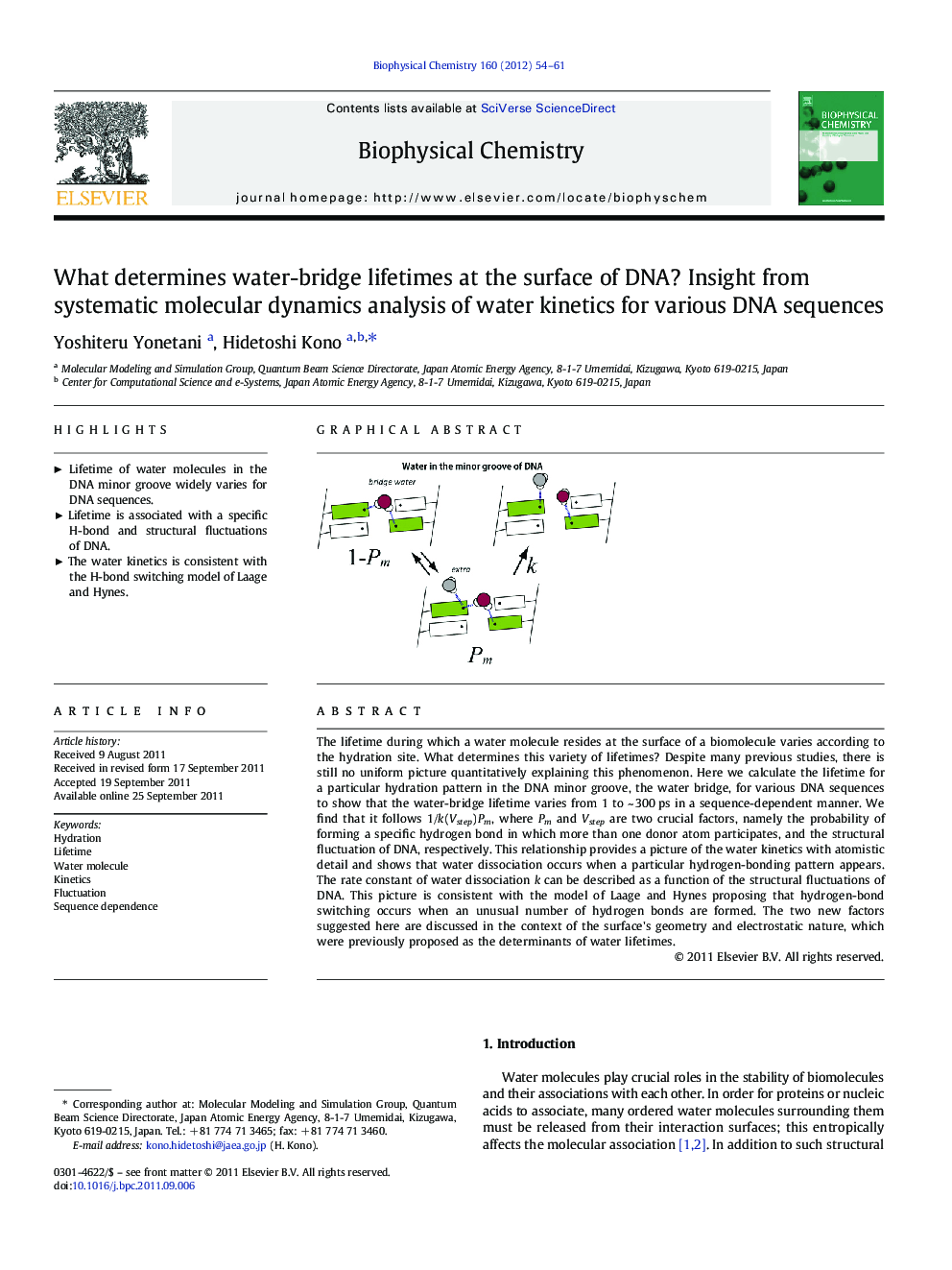| Article ID | Journal | Published Year | Pages | File Type |
|---|---|---|---|---|
| 5371279 | Biophysical Chemistry | 2012 | 8 Pages |
The lifetime during which a water molecule resides at the surface of a biomolecule varies according to the hydration site. What determines this variety of lifetimes? Despite many previous studies, there is still no uniform picture quantitatively explaining this phenomenon. Here we calculate the lifetime for a particular hydration pattern in the DNA minor groove, the water bridge, for various DNA sequences to show that the water-bridge lifetime varies from 1 to ~Â 300Â ps in a sequence-dependent manner. We find that it follows 1/k(Vstep)Pm, where Pm and Vstep are two crucial factors, namely the probability of forming a specific hydrogen bond in which more than one donor atom participates, and the structural fluctuation of DNA, respectively. This relationship provides a picture of the water kinetics with atomistic detail and shows that water dissociation occurs when a particular hydrogen-bonding pattern appears. The rate constant of water dissociation k can be described as a function of the structural fluctuations of DNA. This picture is consistent with the model of Laage and Hynes proposing that hydrogen-bond switching occurs when an unusual number of hydrogen bonds are formed. The two new factors suggested here are discussed in the context of the surface's geometry and electrostatic nature, which were previously proposed as the determinants of water lifetimes.
Graphical abstractDownload full-size imageHighlights⺠Lifetime of water molecules in the DNA minor groove widely varies for DNA sequences. ⺠Lifetime is associated with a specific H-bond and structural fluctuations of DNA. ⺠The water kinetics is consistent with the H-bond switching model of Laage and Hynes.
